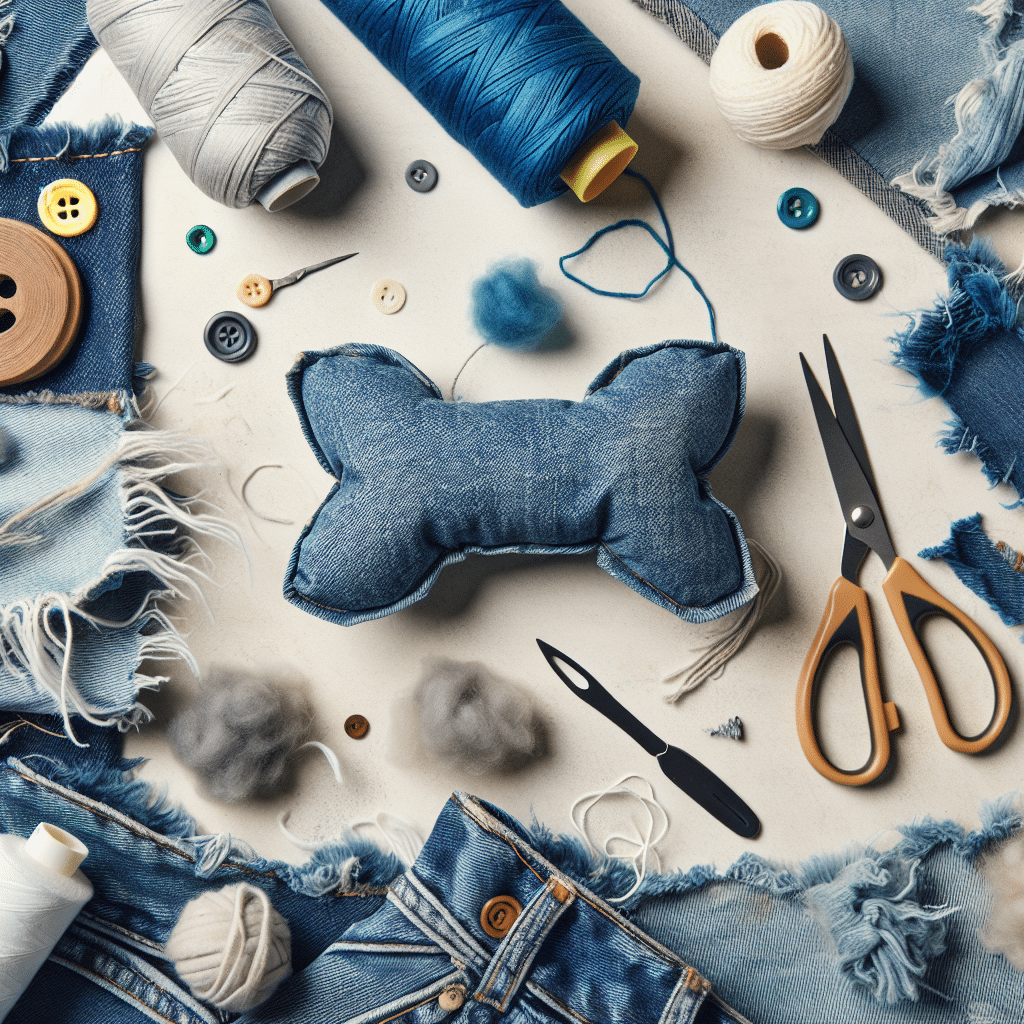DIY Chew Toys Using Reclaimed Denim
Why Choose Denim?
Denim, the fabric made primarily from cotton, is known for its durability and versatility. Reclaimed denim is an eco-friendly material, reducing waste while creating fun and engaging toys for your pets. Using denim for DIY chew toys offers a sustainable path, ensuring you’re providing your furry friends with safe, non-toxic playthings.
Materials Needed
Before starting your DIY project, gather the following materials:
- Reclaimed denim fabric: Old jeans or denim scraps work perfectly.
- Scissors: A heavy-duty pair for navigating through the fabric.
- Sewing machine or needle and thread: For assembling the chew toys.
- Stuffing material: Optional, such as cotton batting or remnant fabric shreds.
- Treats (optional): Small dog treats to insert into the chew toy for added excitement.
Step-by-Step Instructions
1. Selecting the Denim
Choose denim that is clean and free from heavy stains or chemical treatments. Old jeans are ideal, especially if they have undergone minimal washing cycles, ensuring they retain their structural integrity. Opt for denim in varying colors to make colorful chew toys, appealing visually to both pets and their owners.
2. Cutting the Fabric
- Pattern Shape: Select a simple shape, such as a bone, circle, or knot. For beginners, a simple rectangular shape (8×5 inches) is a great start.
- Cutting: Use scissors to cut out two identical pieces of denim following your chosen pattern. If you’re making stuffed toys, add an extra inch for seam allowances.
3. Sewing the Pieces Together
- Positioning: Place the two pieces of denim together, right sides facing inward.
- Sewing: Using a sewing machine or a needle and thread, sew around the edges, leaving a small opening (around 2 inches) for turning and stuffing. Use a straight stitch for durability.
- Reinforce Seams: Go over the seams an extra time to ensure durability, especially for larger or more aggressive chewers.
4. Turning and Stuffing
- Turning Inside Out: Turn the sewn denim piece right side out through the opening. Push the corners out gently using a pencil or chopstick for a defined shape.
- Adding Filling: If desired, fill the toy with cotton batting or remnants to give it additional texture. If you’re adding treats to entice your pet, create small openings in the seam and insert them before fully sealing the toy.
5. Closing the Opening
- Hand Stitching: After stuffing, use a whip stitch or ladder stitch to close the opening securely. This ensures your pet won’t accidentally get caught on any loose threads.
- Extra Layer: For added strength, consider sewing a second layer using thicker denim or reinforcing the toy by sewing in a sturdy rope.
Variations to Experiment With
1. Denim Kongs
Create a “denim Kong” style toy by sewing denim fabric around a hollowed-out plastic bottle. Cut the denim into strips, wrap it around the bottle, and secure the ends with sturdy stitches. Fill the bottle with treats for added enticing fun.
2. Denim Tug-of-War Toy
To create a tug toy, cut three long strips of denim, each about 2 inches wide and 12 inches long. Braid them together tightly and tie off the ends securely. This rustics-style tug toy is perfect for active pets who enjoy some playtime with their humans or other furbabies.
3. Denim Chew Balls
Cut circles from denim, layer several together, and sew in the center to create a ball. Make sure to double-stitch for added durability. Stuff the ball with soft materials and treat bits for extra allure.
4. Squeaky Chew Toys
For added fun, insert a squeaker into the stuffing prior to closing your chew toy. This can encourage active playtime and keep your pet engaged for longer periods.
Cleaning and Maintenance
Maintaining hygiene is crucial. Wash your reclaimed denim chew toys regularly but check for wear and tear during each wash. You can machine wash or hand wash in cold water with mild detergent. For drying, air dry or use a low heat setting to prevent shrinking or damaging the fabric.
Safety Considerations
Always monitor your pets while playing with DIY toys, especially if they are aggressive chewers. Evaluate the toys periodically, checking for loose threads or excessive wear. Dispose of any damaged toys immediately to prevent choking hazards.
Educational and Bonding Experience
Creating these toys presents a fantastic opportunity to engage with your pet. The process of designing and making toys can be fun and educational, teaching you about your pet’s preferences while providing an understanding of waste reduction.
Conclusion
By opting for reclaimed denim, you’re not just crafting adorable chew toys but also making a sustainable choice for the environment. Each DIY project embraces creativity, utility, and ecological mindfulness. Whether it’s a bone, ball, or tug toy, your furry friend will appreciate the love and effort put into their new favorite toy.
